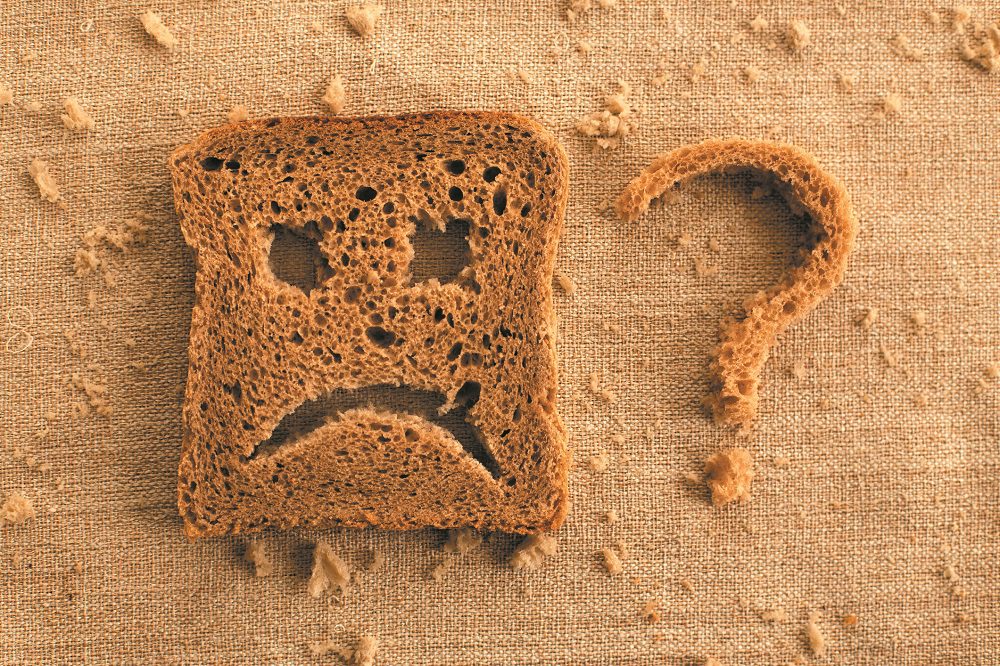A decade ago, the word gluten—a protein found in wheat, barley, and rye—was unfamiliar to most people. Today, 25 percent or more of the U.S. population follows a gluten-free diet. Restaurants offer dedicated gluten-free menus. The Girl Scouts sells gluten-free versions of their famous cookies. And a growing number of people attribute their clear skin, renewed energy, and reduced bloating to the fact that they avoid gluten. Most of these people do not have celiac disease (CD), an autoimmune condition that damages the lining of the intestines and is treated by strictly avoiding gluten. (And many people who do have CD have never been diagnosed.)
But for the one in 100 Americans who currently do have CD, a gluten-free diet is much more than a fad: It’s critical to maintaining health and avoiding severe nutritional deficiencies. When people with CD consume gluten, their body initiates an immune response that attacks the villi—the tiny, fingerlike projections lining the small intestine that help absorb nutrients.
People with CD are four times more likely to develop small bowel cancer in the first year after diagnosis (unless they follow a gluten-free diet), twice as likely to develop coronary heart disease, and often live with other autoimmune conditions such as diabetes or multiple sclerosis. Unfortunately, CD remains vastly undiagnosed: About 80 percent of people living with CD have no idea they have it.
Different symptoms in seniors
Chances are you’ve heard of CD and associate it with the diarrhea, painful cramps, constipation, and bloating that strike children and young adults. But for the 20 to 40 percent of patients who are diagnosed over age 50, gastrointestinal symptoms are often more subtle or even nonexistent. Older people with CD tend to experience different symptoms:
- Fatigue
- Brain fog/difficulty concentrating
- Anemia (due to an inability to properly absorb iron) and other micronutrient deficiencies
- Anxiety or depression
- Joint pain
- Osteoporosis (due to an inability to properly absorb calcium)
- Canker sores, loose-fitting dentures, and other dental problems
- Hair thinning or loss
- Headaches
- Skin rashes.
Many of these symptoms are often chalked up to aging, so millions of people in their 50s, 60s, and above never seek out CD testing. It’s likely nowhere on their radar. Furthermore, doctors who completed their training more than 15 years ago likely learned very little about CD, as research regarding CD and gluten sensitivity is quickly evolving. Most doctors still think a patient needs to have diarrhea and bloating in order to be screened, or they think, “If she’s made it to 65 and never been diagnosed, she doesn’t have it.” The average time to diagnosis for older patients with symptoms is about 15 or 16 years.
Risk factors
If you have a first-degree relative (parent, child, brother, or sister) with CD, you have a one in 22 chance of developing the disease yourself, versus the general population’s one-in-100 risk. Have a second-degree relative with CD, such as an aunt, uncle, niece, nephew, grandparent, or grandchild? Your risk is one in 39. Women are at higher risk compared with men, and it affects individuals of all races and ethnicities.
Treatment
There’s only one treatment for CD: strict avoidance of gluten, which is easier said than done. It may seem simple to stop eating obvious sources of gluten, such as traditional breads, cakes, and pastas, but gluten hides in all sorts of products, including oats, soy sauce, BBQ sauce, and marinades, crisp rice cereal, beer, sliced deli meat and vegan “meats,” and more.
Gluten can also sneak into otherwise gluten-free food during manufacturing or cooking, so people with CD need to become meticulous label readers. Label-reading can be difficult for those with vision issues as the print is often very tiny and the wording can be confusing.
For instance, rice, which is naturally free of gluten, may say “Made on shared equipment with wheat-containing foods,” which means it is likely unsafe for someone with CD.
When dining out, people with CD must ask restaurants if they use separate toasters, deep-fryers, and utensils when preparing food. French fries, for instance, are naturally gluten-free, but if they’re fried in oil also used to prepare breaded chicken nuggets, they can easily pick up some gluten and cause intestinal damage.
You should also speak with your health-care provider about the need for supplementation. People with CD are often low or deficient in iron and other nutrients.
Being diagnosed with CD can feel scary, but it’s also a blessing in disguise, as you can expect to feel better and live a longer, healthier life once you’re on a gluten-free diet. And thanks to the general uptick in interest in the gluten-free lifestyle, it’s easier than ever to thrive with this condition.


